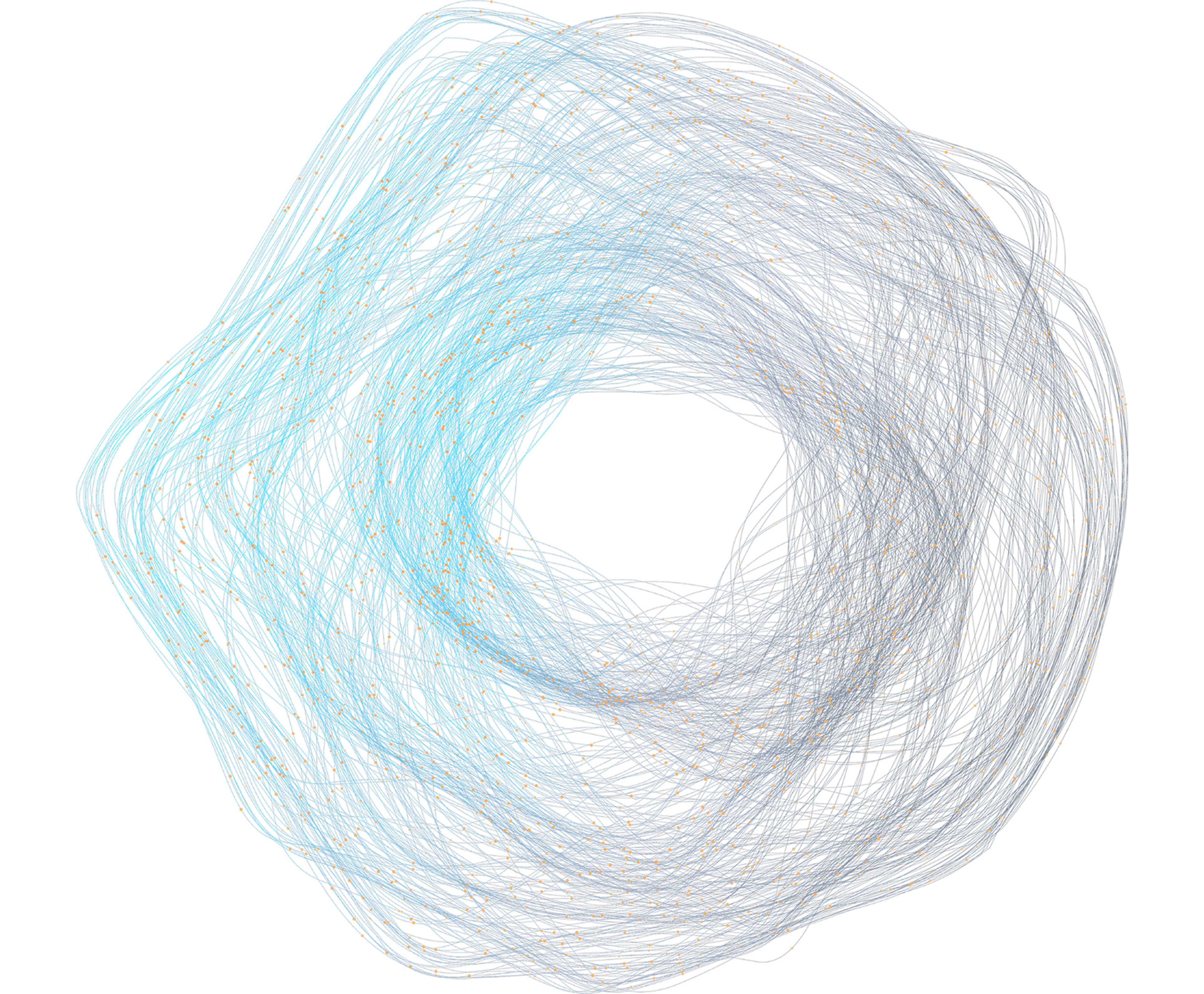article
Striking Gold in Healthcare Data: How Coperor HDMP Accelerates Databricks’ Delta Lake Transformation Process

SECTIONS
Transforming raw to refined data without all the complex coding
In today’s data-driven healthcare landscape, organizations are drowning in a sea of information from disparate sources. Electronic health records, claims data, consent preferences, prescriptions, financial data, and patient surveys are just a few examples of the vast and varied data streams that healthcare providers must navigate. Enter the Delta Lake architecture by Databricks, with strong foundations that enable healthcare organizations to transform data into actionable insights. But with limited ETL functionality, no common data model designed for healthcare and life sciences, nor an integrated master data management platform to fan the fires of data quality, how can healthcare organizations harness this power efficiently and effectively? Gaine’s Coperor Health Data Management Platform (HDMP) holds the answers.
The Delta Lakehouse: A New Paradigm in Data Management
The Delta Lakehouse architecture represents a significant evolution in data management, combining the best features of traditional data warehouses and data lakes. At its core, the Delta Lake platform serves as a centralized repository that not only stores vast amounts of raw data but also transforms it into refined, actionable information.
This unified approach addresses many of the challenges faced by healthcare organizations, including data silos, inconsistencies, and the need for extensive processing to make data analytics-ready. By providing a single source of truth, the Delta Lakehouse enables healthcare providers to make more informed decisions, improve patient outcomes, and streamline operations.
Navigating the Medallion Architecture
Central to the Delta Lake ecosystem is the medallion architecture, a structured framework that orchestrates the transformation of raw data into refined, analytics-ready insights. This architecture consists of three key stages:
- Bronze Tables: These are exact replicas of the original source data, providing a foundational layer for data processing.
- Silver Tables: Intermediate datasets that are cleansed, aligned, and free of duplicates, setting the stage for deeper analysis.
- Gold Tables: The final stage, holding the most refined, high-quality data optimized for analytics and business intelligence.
While this process may seem straightforward, the reality of harmonizing operational data from disparate systems into a trustworthy and comprehensive enterprise view is far more complex than simple examples might suggest, requiring a tightly integrated set of capabilities.
The Complexity Behind Data Transformation
The journey from bronze to gold tables is often oversimplified in examples, such as mapping date formats or changing “M” to “Male” and “F” to “Female.” However, the actual process of transforming healthcare data is significantly more intricate and demanding.
Consider the following challenges:
- Data Variety: Healthcare data comes in numerous formats, from structured database entries to unstructured physician notes. Each type requires different processing techniques.
- Data Volume: The sheer amount of data generated in healthcare settings is staggering, necessitating robust systems capable of handling and processing terabytes or even petabytes of information.
- Data Velocity: With real-time data streaming from various sources, systems must be capable of processing and analyzing information at high speeds.
- Data Veracity: Ensuring the accuracy and reliability of data is crucial in healthcare, where decisions can have life-altering consequences.
- Regulatory Compliance: Healthcare data is subject to strict regulations like HIPAA, adding another layer of complexity to data management and transformation.
To address these challenges, data engineers often need to write complex code to handle data transformation, cleansing, and integration. This can involve:
- Developing sophisticated ETL (Extract, Transform, Load) processes
- Creating complex SQL queries for data manipulation
- Implementing machine learning algorithms for data classification and anomaly detection
- Designing intricate data models to represent complex healthcare relationships
- Building robust error handling and data validation mechanisms
These tasks can result in thousands of lines of code, requiring months of development work and ongoing maintenance. The complexity of this coding effort can be a significant barrier to organizations seeking to leverage the full potential of their data.
Coperor HDMP: Simplifying Complex Transformations
This is where Gaine’s Coperor HDMP shines. Coperor streamlines Databricks workflows by automating complex transformation, matching, merging, and orchestration processes. It tackles the intricate design patterns and extensive coding efforts that represent thousands of lines of code and months of development work.
Coperor HDMP complements a Databricks implementation by:
- Relieving data analytics teams from building complex code to automate data transformation processes.
- Providing a high-performance Identity Management server that creates relationships between transactional data and dimensional data in gold tables.
- Establishing a seamless bi-directional integration pathway, enabling data to be processed for analytics and reintegrated into operational systems as needed.
By automating these complex processes, Coperor HDMP significantly reduces the time and effort required to transform raw data into actionable insights. This automation not only accelerates the data refinement process but also minimizes the risk of errors that can occur in manual coding.
Getting to Gold Faster with Better Quality Data
By leveraging Coperor HDMP, healthcare organizations can accelerate their journey from bronze to gold tables. The platform’s adaptive data strategy ensures that each piece of information is treated according to its nature and requirements. This not only streamlines the data management process but also relieves the burden on Delta Lake and the teams responsible for its maintenance.
Coperor’s approach to data quality is rigorous and comprehensive. It evaluates data quality at each step in the lifecycle, identifying and correcting problems as early as possible. This results in quicker end-to-end resolution and prevents the propagation of erroneous data to the analytics layer.
Moreover, Coperor’s audit protocols serve as a safeguard against data corruption, ensuring that only verified and accurate data is made available for analytical processing. These audit logs can be integrated as a distinct event stream within the Databricks platform, providing valuable insights into data anomalies and enhancing analytical capabilities.
Real-World Impact: Transforming Healthcare Data Management
The integration of Coperor HDMP with Databricks’ Delta Lake ecosystem has far-reaching implications for healthcare organizations:
- Improved Patient Care: By providing a more comprehensive and accurate view of patient data, healthcare providers can make more informed decisions, leading to better patient outcomes.
- Operational Efficiency: Automating complex data transformation processes frees up valuable resources, allowing healthcare organizations to focus on core competencies rather than data management.
- Enhanced Analytics: With high-quality, refined data readily available in gold tables, organizations can perform more sophisticated analytics, uncovering insights that were previously hidden in raw data.
- Regulatory Compliance: Coperor’s robust data management capabilities help organizations maintain compliance with healthcare regulations, reducing legal and financial risks.
- Cost Reduction: By streamlining data management processes and reducing the need for extensive manual coding, organizations can significantly reduce their IT costs.
Conclusion: A Golden Opportunity for Healthcare Data Management
The integration of Coperor HDMP with the Databricks ecosystem represents a significant advancement in data management for healthcare organizations. By automating complex data transformation processes and ensuring high-quality, analytics-ready data, Coperor HDMP enables organizations to derive actionable insights with greater efficiency.
As healthcare continues to evolve, the ability to quickly and accurately transform raw data into golden insights will be crucial. With Coperor HDMP and Databricks’ Delta Lake, healthcare organizations can strike gold in their data, driving informed decision-making and ultimately improving patient outcomes.
The journey from bronze to gold in data management is no longer a daunting, resource-intensive process. With Coperor HDMP, healthcare organizations can navigate this path with confidence, unlocking the full potential of their data and paving the way for a more data-driven, efficient, and effective healthcare system.
Ready to learn more? Click here to download Gaine’s eBook, “Striking Gold: How Gaine Transforms Bronze Databricks into Gold, Part I.” Discover how Gaine’s Coperor HDMP seamlessly integrates with Databricks’ Delta Lake ecosystem to transform raw data into actionable insights – without the need to write thousands of lines of transformation code.

